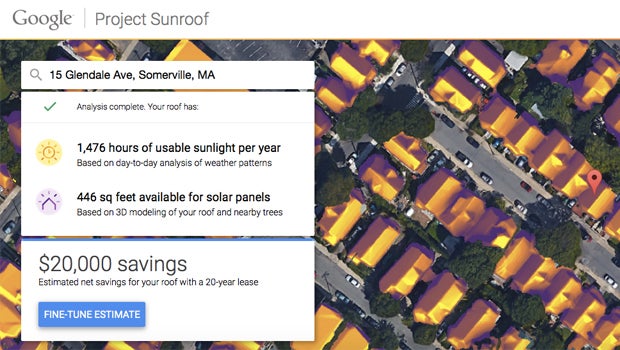Google’s Project Sunroof will tell you if solar panels are worth it

Just because all of Google’s most exciting projects are being spun off into new Alphabet companies, doesn’t mean the remaining Googlers won’t continue to pump out awesome ideas too.
On Monday, the Google Maps team unveiled Project Sunroof – a tool designed to inform homeowners whether solar panels would be a worthwhile investment.
The tool will enable users to type in their address and see how much sunlight falls on their roof a year.
The result, Google says, is a “treasure map of solar energy”, which shows visitors how much solar power their property is capable of generating when factors such as average cloud cover and shade cast by buildings and trees is taken into account.
Google will serve up a figure for potential energy-bill savings over a period of 20 years (it’s estimated to be about $20,000 in most cases). It’s even possible to fine-tune savings estimates by calculating tax breaks and other green-energy incentives.
Google will direct interested parties to potential installers in their area, something else the firm’s search customers are having trouble getting to grips with.
SEE ALSO: What’s cooking in Google’s secret X Labs?
Right now Google is rolling the tool out in Boston, San Francisco and Fresno, CA, but if you log onto the Project Sunroof website you can see a number of sample addresses. Google says the availability will grow to the entire US – and perhaps even the world.
You can see Google’s pitch in the video clip below.
http://www.youtube.com/watch?v=BXf_h8tEes


